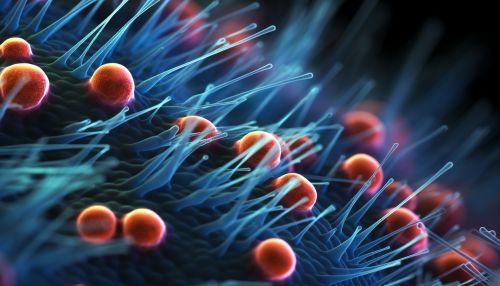Bacillus
Overview
Bacillus is a genus of Gram-positive, rod-shaped bacteria and a member of the phylum Firmicutes. Bacillus species can be obligate aerobes or facultative anaerobes, and test positive for the enzyme catalase. They are ubiquitous in nature and are often found in soil and dust. Some species have the ability to form highly resistant, dormant structures called endospores.


Characteristics
Bacillus bacteria are typically large, rod-shaped, and occur in chains, pairs, or individual cells. They are Gram-positive, which means they retain the violet crystal violet stain used in the Gram stain procedure. This is due to the high amount of peptidoglycan in the cell wall. Bacillus species are either obligate aerobes, meaning they require oxygen to grow, or facultative anaerobes, meaning they can grow without oxygen but prefer to use it when available.
Endospore Formation
One of the defining characteristics of the Bacillus genus is the ability of many species to form endospores. Endospores are dormant, tough, and non-reproductive structures produced by some bacteria in response to harsh conditions. They allow the bacterium to survive in a dormant state for long periods, even centuries. Endospores can survive high temperatures, radiation, desiccation, and chemical disinfectants.
Pathogenesis
Some Bacillus species are harmful to humans and cause diseases. For instance, Bacillus anthracis is the agent responsible for anthrax, a rare but severe disease that affects both humans and animals. Bacillus cereus is another species that can cause food poisoning when ingested. It produces toxins that cause vomiting or diarrhea.
Industrial and Scientific Uses
Bacillus species have many industrial and scientific uses. Bacillus subtilis, for example, is used as a model organism in laboratory research. Bacillus thuringiensis produces a toxin that is used as a pesticide to control insect pests. Some Bacillus species are used in the production of antibiotics, enzymes, and other bioactive compounds.
